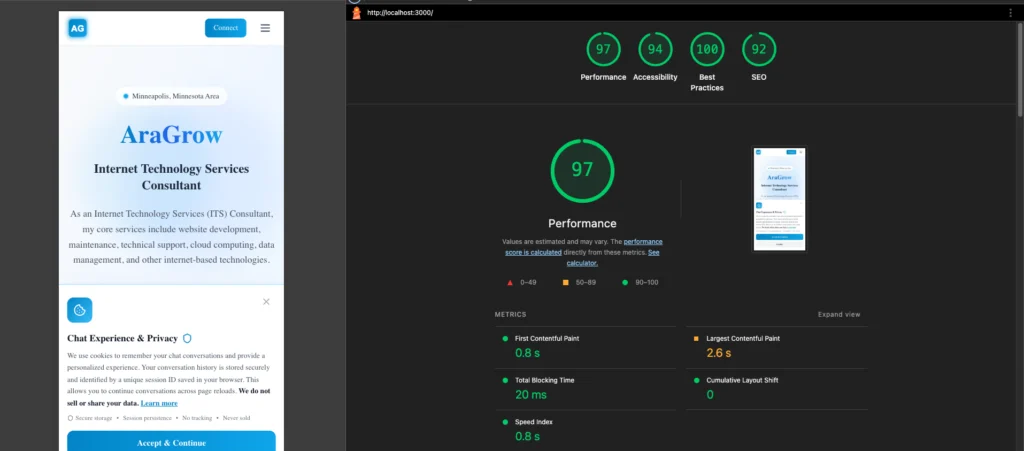The rise of AI-powered browsers marks a seismic shift in how businesses and users interact with the web. If you feel a bit overwhelmed by the rise of AI-powered browsers, you’re not alone. Honestly?
Unfortunately, for clients still anchored in the pre-AI browser mindset, the transition isn’t just uncomfortable—it’s potentially costly, unless they begin adapting now.
AI Browsers: Not the Future. They’re Already Here
The first time I saw an AI browser summarize a web page for me, I realized just how fast things were changing, and it was both exciting and a little unnerving.
It’s tempting to think of AI browsers as a far-off prospect, but the truth is they are transforming the web right now. I use Comet from Perplexity, but that’s just one of several leading the charge. Major platforms and challengers are redefining browsing—Gemini (Google), Dia Browser, Opera Neon, Sigma AI Browser, Genspark, Microsoft Edge with Copilot, Brave, Arc, Zen, and others are now emerging.
For transparency: I don’t have a favorite, and apart from Comet, I am only familiar with these browsers by name—not through deep, hands-on experience. The AI browser space is evolving so rapidly that it’s important for all of us—including both technologists and clients—to keep an open mind as new options emerge.
AI browsers are not the future—they’re the present. As these tools become the new baseline, user expectations are changing too.
Why the Pre-AI Browser Mindset Will Be Painful
Traditional browsers are passive: they show what’s coded and little more. With a pre-AI mindset, you’re relying on outdated beliefs:
- Manual content hunting: Users slog through content, unaided.
- Generic experiences: No summaries, predictive navigation, or contextual support.
- Limited productivity: The browser just “shows”; it doesn’t “think.”
As AI browsers take hold, legacy sites and workflows will struggle:
- Static content won’t adapt or be AI-readable
- Summaries and smart navigation break down
- Users bounce to dynamic, competitor sites that “just work”
The Learning Curve: Bridging Old and New
We’re all still learning about AI browsers. Technologists and agencies are genuinely figuring out best practices day by day. Our job is to bridge the gap between the “OLD” and the “NEW”.
Yet as the saying goes: “You can lead a horse to water, but you can’t make it drink.” Clients remain in the driver’s seat, making the ultimate calls about their digital future. But the consequences of inaction are real: missed engagement, lost visibility, and growing gaps with your competition.
Steps to Get Ready
Rather than simply writing about web performance, I am actively redesigning my front end to ensure my site loads in under one second. By using the concept of performance budgeting, I have consciously given greater priority to speed and efficiency over visual design. This doesn’t mean design is not important to me—it’s simply a strategic choice I made to achieve optimal performance outcomes.

1. Audit Your Site for AI Readiness
Is your content structured, semantic, and accessible for summarization or AI processing?
2. Invest in Performance Budgeting
Optimize so features stay responsive and fast, matching AI browser expectations.
3. Embrace Dynamic, Contextual Content
Abandon static pages—structure for summaries, dynamic navigation, and custom experiences.
4. Develop for AI Integration
Build with APIs, clean data, and clarity; allow AI browsers to parse and enhance every aspect.
5. Prioritize Flexibility
Ensure your site still works if reconstructed, summarized, or guided by an AI-powered browser.
The Future: AIO, EAO, GEO—What’s Next?
The web is splitting into three classes of sites:
- AIO (AI-Optimized):
Semantic, flexible, designed for AI-driven experiences and restructuring. - EAO (Experience-Adapted):
Responsive to every user, auto-tuning navigation and recommendations. - GEO (Generatively Enhanced):
Ready for browsers and agents to create new content, tools, or interfaces on the fly.
Websites that aren’t AIO, EAO, or GEO will fade:
Unstructured, rigid sites frustrate users and miss out on all the advantages of intelligence, automation, and engagement that AI-driven browsers deliver.
Final Speculation
The web’s passive era is ending. AI browsers are here, right now. As technologists, we coach and build, but it’s you, the client, who drives. Move forward and thrive, or resist and risk being left behind.
Think of this transformation like the extinction of the dinosaurs—those massive, powerful creatures ruled the earth until a sudden change made survival impossible for those unable to adapt. In today’s web ecosystem, it’s not the biggest or oldest sites that will survive, but the most adaptable. The websites that can evolve, embrace AI, and respond to new challenges are the ones that will thrive, while the rest risk digital extinction.
In the new age of AI browsers, every decision matters.
If you’re unsure whether your site can keep up, you’re not alone. I’m right there with you, learning as we go. I’ve chatted with other business owners who worry about what’s ahead, and believe me—I feel some of those same jitters.
Hopefully, we can adapt before things get dramatic. One of my favorite movies is Space Cowboys, where Tommy Lee Jones’s character makes the ultimate sacrifice, riding the meteor to save everyone else. I think we’d all rather adapt than pull a “Space Cowboy” for our business!
So, let’s lean into this change together—explore, adapt, and maybe even have a little fun along the way.
Will your website be ready for the shift, or will it be extinct? The choice, the outcome. It is yours.

